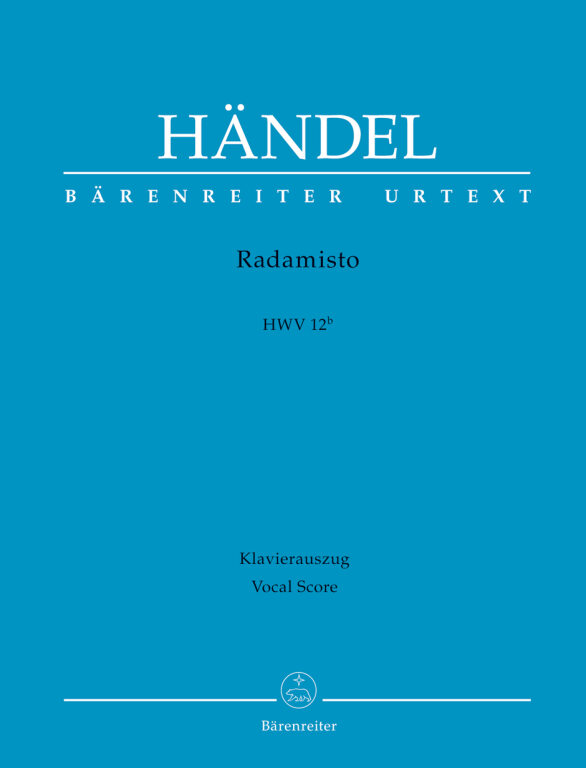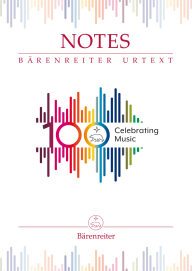Kérjük, hogy a kórus létszámának megfelelő mennyiséget vásároljon.
A fent jelzett minimális mennyiségnél kevesebb példányt sem webboltunkban, sem a kottaboltokban nem lehet vásárolni.
Kisebb mennyiségért kérjük forduljon vevőszolgálatunkhoz.
Händel, Georg Friedrich: Radamisto
Opera seria in 3 acts
karpartitúra
The first season of the Royal Academy ended on 25 June 1720. The new vocal soloists arrived in London in September. As the first version of 'Radamisto' had been a great success during the first season, Handel revised the opera for the oncoming season to accommodate it to his new more proficient cast.
The revision was extensive. It included:
1) Changes to the vocal range of Radamisto (soprano to alto for the singer Senesino), Zenobia (alto to soprano for the female singer Durastanti) and Tiridate (tenor to bass for the singer Boschi),
2) compositions of new arias and ensembles,
3) significant changes to the plot consisting of the reduction of Fraartes' role from brother to servant Tiridates and the omission of his not so original love affair to Zenobia.
For most of Handel's operas it can be said that the first version is the best version. This is due to the fact that when a work was performed again in later seasons, Handel was often forced to make changes due to casting constraints which often affected the equilibrium and the dramatic context of the work. 'Radamisto' is an exception to this rule - the December 1720 adaptation which forms the main part of this vocal score is a much more superior composition than the version performed in April of the same year.
1923 őszén egy fiatalember szülei nappalijában készítette el frissen alapított kiadójának első zenei kiadványait. Cégét Bärenreiternek nevezte el. 1924 tavaszán, amikor Karl Vötterle nagykorú lett, bejegyezhette kiadóját a Német Könyvkiadók és Könyvkereskedők Szövetségébe. Eleinte főként népdalgyűjteményeket, egyházi, valamint orgonazenét adott ki, köztük Leonhard Lechner és Heinrich Schütz műveit, melyeket akkoriban elsősorban szakmai körökben ismertek.
A második világháború utolsó hónapjaiban a kasseli kiadó megsemmisült, és mindent újra kellett kezdeni. A német zenei enciklopédia, az MGG – „Musik in Geschichte und Gegenwart” –, valamint számos tudományos-kritikai összkiadás, mint például a „New Mozart Edition” és a „New Bach Edition” elindításával a kiadó határozott vízióval bíró alapítója kijelölte az utat a Bärenreiter továbbfejlődéséhez. A zenetudományi kiadványok egyre nagyobb érdeklődést és elismertséget váltottak ki.
Amikor Karl Votterle 1975-ben meghalt, lánya, Barbara vette át az irányítást, férje, Leonhard Scheuch támogatásával. Vezetésük alatt a katalógus jelentősen bővült, és létrejött a BÄRENREITER URTEXT márka. 2003-ban fiuk, Clemens Scheuch is csatlakozott a kiadóhoz, amelyet ma szüleivel együtt vezet. Így a Bärenreiter a mai napig családi vállalkozás maradt, és a komolyzene világában nemzetközileg elismert vállalattá vált.

 Deutsch
Deutsch English
English Español
Español Français
Français Polski
Polski Română
Română Slovenský
Slovenský Slovenščina
Slovenščina 中文
中文

















